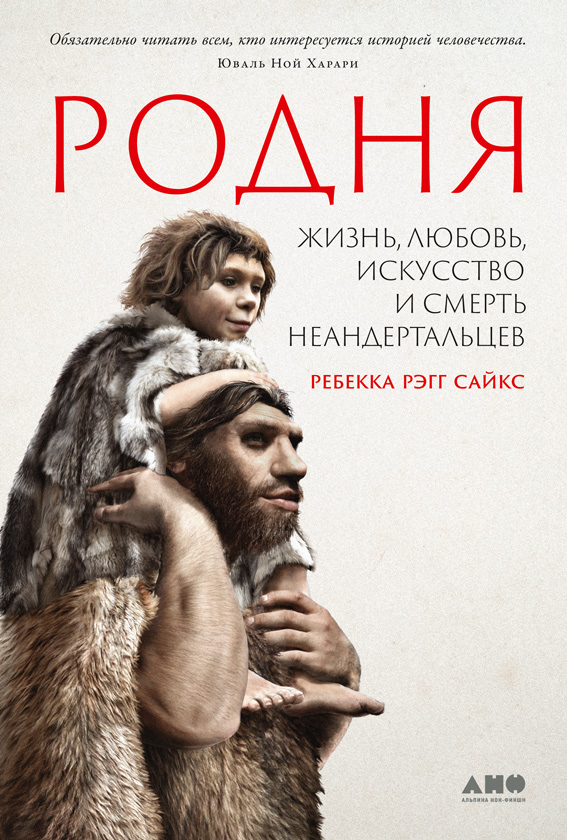class="title1">
211
С. Lalueza-Fox et al., ‘A Melanocortin 1 Receptor Allele Suggests Varying Pigmentation among Neanderthals’, Science 318(2007): 1453–5.
212
J. Krause et al., ‘The Derived FOXP2 Variant of Modern Humans Was Shared with Neandertals’, Curr. Biol. 17(2007): 1908–12.
213
C. Finlayson, ‘Biogeography and Evolution of the Genus Homo’, Trends Ecol. Evol. 20(2005): 457–63.
214
J. D. Wall and S. K. Kim, ‘Inconsistencies in Neanderthal Genomic DNA Sequences’, PLoS Genetics 3(2007): el75; T. D. Weaver et al., ‘Close Correspondence between Quantitative- and Molecular-Genetic Divergence Times for Neandertals and Modern Humans’, Proc. Natl. Acad. Sci. USA 105(2008): 4645–9.
215
I. V. Ovchinnikov et al., ‘Molecular Analysis of Neanderthal DNA from the Northern Caucasus’, Nature 404(2000): 490–3; P. Beerli and S. V. Edwards, ‘When Did Neanderthals and Modern Humans Diverge?’, Evol. Anthropol. Suppl. 1(2002): 60–3.
216
См., например: C. Stringer and C. Gamble, In Search of the Neanderthals: Solving the Puzzle of Human Origins (London: Thames and Hudson, 1993).
217
C. Finlayson and J. S. Carrion, ‘Rapid Ecological Turnover and Its Impact on Neanderthal and Other Human Populations’, Trends Ecol. Evol. 22(2007): 213–22; J. Krause et al., ‘Neanderthals in Central Asia and Siberia’, Nature 449(2007): 902–4.
218
Нелегко быть точным относительно времени, когда вследствие процесса непрерывной эволюции людей среднего плейстоцена Евразии можно определить как гейдельбергских людей или как неандертальцев. Особи, узнаваемые как неандертальцы, появляются где-то между 200–125 тысячами лет назад.
219
W. J. Burroughs, Climate Change in Prehistory: The End of the Reign of Chaos (Cambridge: Cambridge University Press, 2005).
220
W. Roebroeks, N. J. Conard, and T. van Kolfschoten, ‘Dense Forests, Cold Steppes, and the Palaeolithic Settlement of Europe’, Curr. Anthropol. 33(1992): 551–86.
221
См. главу 2. Куда поместить африканские окаменелости H. heidelbergensis, является вопросом открытым и зависит от того, когда африканские и евразийские родословные были изолированы друг от друга. Если это разделение произошло в начале среднего плейстоцена, как предполагают некоторые генетические оценки, тогда африканской форме следует дать новое имя, возможно, родезийский человек, Homo rhodesiensis. Homo heidelbergensis тогда будет именоваться исключительно евразийское население, которое предшествовало неандертальцам, но не предкам. Недавнее исследование, объединившее анатомию и генетику, говорит в пользу тесной связи между H. heidelbergensis и неандертальцами, а современные люди согласно исследованию являются отдельной эволюционной линией; R. Gonzalez-Jose et al., ‘Cladistic Analysis of Continuous Modularized Traits Provides Phylogenetic Signals in Homo Evolution, Nature 453(2008): 775–8.
222
P. deMenocal, ‘Plio-Pleistocene African Climate’, Science 270(1995): 53–9.
223
Южный мамонт, Mammuthus meridionalis; степной мамонт, Mammuthus trogontheri: шерстистый мамонт, Mammuthus primigenius. A. M. Lister and A. V. Sher, ‘The Origin and Evolution of the Woolly Mammoth’, Science 294(2001): 1094–7.
224
S. L. Vartanyan, V. E. Garrut, and A. V. Sher, ‘Holocene Dwarf Mammoths from Wrangel Island in the Siberian Arctic’, Nature 382(1993): 337–40.
225
Lister and Sher, ‘Origin and Evolution of theWoolly Mammoth’.
226
R. G. Klein, The Human Career: Human Biological and Cultural Origins (Chicago: Chicago University Press, 1999).
227
T. van Kolfschoten, ‘The Eemian Mammal Fauna of Central Europe’, Neth. J. Geosci. 79(2000): 269–81; D. Pushkina, ‘The Pleistocene Easternmost Distribution in Eurasia of the Species Associated with the Eemian Palaeoloxodon antiquus Assemblage’, Mammal. Rev. 37(2007): 224–45.
228
Не все теплые периоды были влажными и не все холодные периоды были сухими, но большинство из них соответствовало этим широким категориям.
229
J-C. Svenning, ‘A Review of Natural Vegetation Openness in Northwestern Europe’, Biol. Cons. 104(2002): 133–48.
230
Tapirus arvernensis; C. Guerin and M. Patou-Mathis, Les grands mammiferes pliopleistocenes d’Europe (Paris: Masson, 1997).
231
R. E. Bodmer, ‘Ungulate Frugivores and the Browser-Grazer Continuum’, Oikos 57(1990): 319–25.
232
A. J. Stuart, ‘Mammalian Extinctions in the Late Pleistocene of Northern Eurasia and North America’, Biol. Rev. Camb. Philos. Soc. 66(1991): 453–562.
233
Два вида бегемота жили в Европе в эпоху плейстоцена. Одним из них был гигантский бегемот, Hippopotamus major (также известный как Hippopotamus antiquus). Африканский Hippopotamus amphibius — тот же самый вид, который живет в Африке и сегодня, — был тем видом, который дожил до последнего межледниковья в Европе; Pushkina, ‘The Pleistocene Easternmost Distribution’.
234
Bubalus murrensis.
235
Эта макака, также широко известная как скальная обезьяна (она обитает на скалах Гибралтара), примечательна своей бесхвостой внешностью. Берберские обезьяны были завезены на Гибралтар англичанами в XVIII веке и со временем одичали.
236
Guerin and Patou-Mathis, Les grands mammiferes pliopleistocenes.
237
Узконосый носорог (Stephanorhinus hemitoechus) был меньшим из двух видов и обитал в лесостепи; более крупный носорог Мерка (Stephanorhinus kirchbergensis) жил в редколесьях. Прямобивневый лесной слон (Elephas (Palaeoloxodon) antiquus) также жил в широколиственных редколесьях. Эти виды вымерли после последнего межледниковья, но до последнего оледенения, где-то около 50–25 тысяч лет назад.
238
Stuart, ‘Mammalian Extinctions’; Pushkina, ‘The Pleistocene Easternmost Distribution.
239
Finlayson and Carrion, ‘Rapid Ecological Turnover’; Krause et al., ‘Neanderthals in Central Asia’.
240
M. Pitts and M. Roberts, Fairweather Eden (London: Century, 1997); C. Gamble, The Palaeolithic Societies of Europe (Cambridge: Cambridge University Press, 1999); S. A. Parfitt et al., ‘The Earliest Record of Human Activity in Northern Europe’, Nature 438(2005): 1008–12.
241
H. Thieme, ‘Lower Palaeolithic Hunting Spears from Germany’, Nature 385(1997): 807–10.
242
«Классические неандертальцы» — этот термин часто используется для описания окаменелых останков, которые можно легко идентифицировать как неандертальцев из-за того, что они имеют полный набор анатомических характеристик, приписываемых им.
243
Finlayson, Neanderthals and Modern Humans.
244
A. J. Stuart, ‘The
























